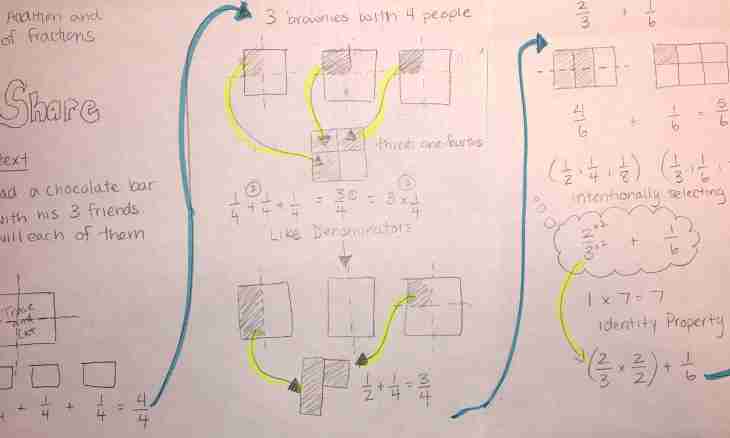The common fraction is called proper if the number standing in its numerator is less than number standing in a denominator. Reduction of fractions is made for work with the least large numbers.
Instruction
1. For reduction of the proper common fraction divide its numerator and a denominator into their NOD - the greatest general multiplier. It is possible to use two ways of finding of the greatest general multiplier of two numbers: in writing, having factorized them or having estimated "by eye".
2. Use an estimation method "approximately": look of what multipliers both the numerator and a denominator consist. Divide them into this number. Estimate the received fraction: whether these turned-out numerator and a denominator have the general multiplier. Repeat the procedure of division until the numerator and a denominator have general multipliers. For example, you need to reduce a proper fraction: 45/90. Ponder to what multipliers it is possible to spread out number 45 (it is admissible, 5 and 9). The denominator 90 can also be presented how the work of multipliers 9 i10. The answer was outlined: 5/10. Reduce fraction once again, having selected the general multiplier 5, according to the above principle. As a result you receive a nonreducible proper fraction?.
3. If the estimations method causes in you difficulties, in writing factorize numerator and a denominator to find the greatest common divisor of these two numbers. For example, it is necessary to reduce a proper fraction: 125/625. Find all simple multipliers of number 125: for this purpose 125:5=25; 25:5=5; 5:5 =. So, at number 125 you found three simple multipliers (5;5;5). Perform the same operation with number 625. Divide 625:5 = 125; 125:5 =; 25:5 = 5; 5:5 =. Thus, at number 625 you found four simple multipliers (5;5;5;5).
4. Now find the greatest common divisor of numbers 125 and 625. For this purpose write out all repeating multipliers of the first and second one time, i.e. it will be number 5;5;5. Multiply them among themselves: 5·5 · 5 = – it will also be the greatest common divisor for numbers 125 and 625. Divide numerator and a denominator of a proper fraction 125/625 into number 125, you receive a nonreducible proper fraction: 1/5.

